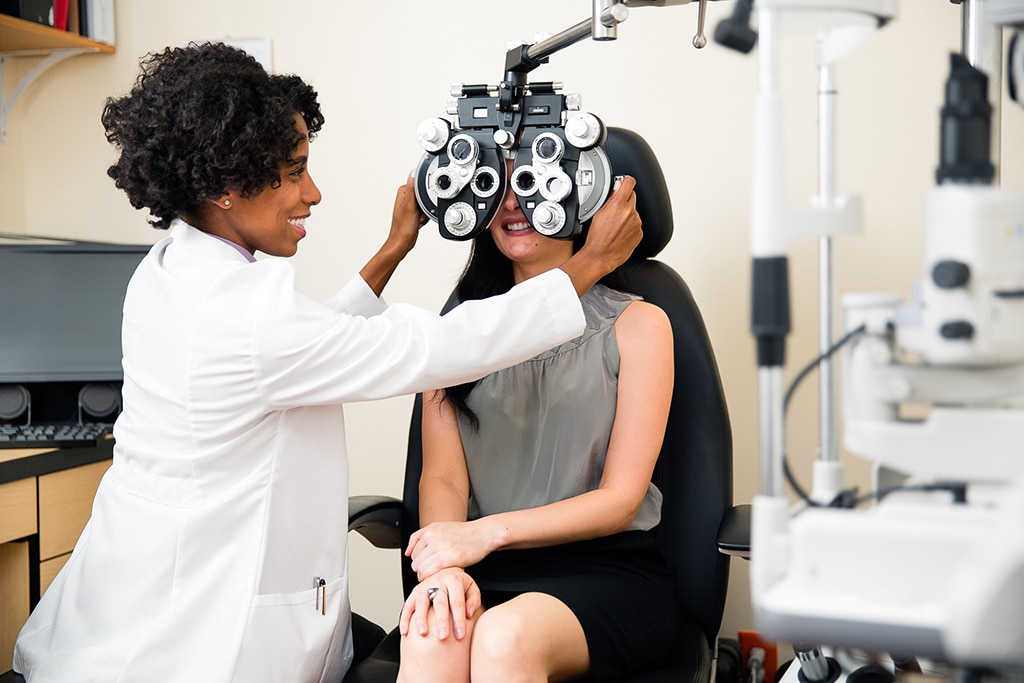Exactly How an Eye Doctor Can Transform Your Vision Health in Chino
Exactly How an Eye Doctor Can Transform Your Vision Health in Chino
Blog Article
Exploring the most up to date Technical Improvements in Optometry and What They Mean for Eye Doctors
In the ever-evolving field of optometry, recent technological developments are improving just how experts approach eye treatment. From the accuracy of Optical Comprehensibility Tomography to the nuanced insights supplied by AI-driven diagnostic devices, these developments are establishing new criteria in patient evaluation and therapy. Teleoptometry is positioned to redefine accessibility, guaranteeing that knowledge transcends geographical limitations. As these advancements permeate the technique, optometrists are encountered with the difficulty of welcoming these devices to improve patient outcomes. Yet, the question continues to be: how will these technical changes redefine the functions and duties within the profession?
Advancements in Diagnostic Devices
Progressing the field of optometry, advancements in diagnostic tools have transformed the method eye care professionals analyze and detect eye problems and visual impairments. The previous decade has seen substantial technological developments, making it possible for even more exact and extensive analyses.
An additional trick technology is the intro of innovative corneal topography systems, which map the surface curvature of the cornea with accuracy. These devices are particularly useful for fitting contact lenses and detecting corneal conditions. Electronic retinal imaging has actually transformed typical ophthalmoscopy, offering detailed, breathtaking sights of the retina that facilitate complete visual assessments.
The growth of wavefront aberrometry has also been vital, allowing the evaluation of refractive mistakes with unrivaled accuracy (Optometrist Chino). This innovation helps in personalizing restorative lenses and enhancing surgical results for refractive surgical procedures. Jointly, these diagnostic innovations equip optometrists to deliver premium individual treatment, making certain early treatment and tailored treatment strategies, ultimately improving visual health and wellness end results
AI in Individual Management
Building on the foundation of innovative diagnostic tools, the unification of synthetic intelligence (AI) in person management represents a transformative leap for optometry. AI systems are progressively used to boost effectiveness, precision, and personalization in individual treatment. By analyzing substantial amounts of data, AI can identify patterns and forecast prospective ocular conditions, allowing optometrists to tailor interventions a lot more efficiently. This capacity is important in taking care of chronic eye diseases such as glaucoma and diabetic person retinopathy, where early detection and constant surveillance are key.
Furthermore, AI-driven systems promote structured client communications and management processes. Automated organizing, virtual examinations, and personalized follow-up plans not just enhance client complete satisfaction but likewise enhance time management for specialists. These systems can triage patients based upon the seriousness of their conditions, making certain that those in critical requirement get timely attention.
Additionally, AI enhances decision-making by giving eye doctors with evidence-based referrals and therapy pathways. By integrating data from electronic health and wellness documents, AI tools supply insights that educate clinical decisions, lowering the risk of errors and improving individual results. As AI remains to advance, its duty in client management will likely expand, reshaping the landscape of optometric treatment.
Breakthroughs in Retinal Imaging
In the realm of optometry, retinal imaging has actually witnessed remarkable technical innovations that are enhancing analysis capacities and client treatment. Developments such as Optical Coherence Tomography (OCT) and fundus photography have actually revolutionized just how eye doctors assess the retina and imagine.
Enhanced imaging techniques like OCT angiography are further refining analysis accuracy. Optometrist Chino. Such advancements facilitate the recognition of minute retinal changes that can signify disease development.
Moreover, developments in artificial intelligence are increasing retinal imaging by allowing computerized evaluation of huge datasets. These systems help eye doctors in recognizing patterns a measure of pathology, consequently enhancing diagnostic precision and performance. Collectively, these advancements are changing retinal imaging into a keystone of contemporary eye care, boosting results and expanding restorative possibilities.
Teleoptometry's Growing Role
Teleoptometry is increasingly becoming an important part of eye care, driven by advancements in data and diagnostic devices. As optometry embraces electronic change, teleoptometry helps with remote appointments, permitting eye doctors to prolong their services past traditional limits. This is particularly beneficial in rural and underserved locations where access to specialized eye care is usually restricted. By leveraging high-resolution video clip conferencing and progressed retinal imaging, eye doctors visit this page can conduct thorough eye exams from afar, making certain timely diagnosis and therapy.
The combination of artificial knowledge (AI) further improves teleoptometry, making it possible for the evaluation of visual data and helping in the discovery of ocular conditions such as glaucoma and diabetic person retinopathy. AI-powered algorithms can swiftly analyze complex imaging data, giving eye doctors with beneficial insights that bolster medical decision-making.
In addition, teleoptometry supports continuity of treatment through seamless integration with electronic health and wellness documents (EHRs), permitting optometrists to preserve thorough individual backgrounds. This guarantees that clients receive regular and individualized treatment even when talking to different professionals.
In spite of these advantages, difficulties stay, including making official statement certain information safety and managing client assumptions. Nonetheless, teleoptometry stands for a considerable stride in the direction of even more accessible, effective, and patient-centered eye care. As technology develops, its duty is poised to expand better.

Future Trends in Eye Care
A myriad of ingenious patterns is readied to reshape the future of eye care, driven by technical advancements and the evolving requirements of clients. One significant pattern is the integration of fabricated intelligence (AI) in diagnostics, which assures to boost the precision and effectiveness of eye exams. AI formulas can examine substantial amounts of data from retinal pictures, potentially detecting problems like diabetic person retinopathy and glaucoma earlier than standard techniques.
In addition, tailored medication is gaining grip in optometry, with genetic testing notifying customized treatment plans. This strategy aims to optimize individual outcomes by customizing interventions to specific genetic accounts. Wearable innovation, such as clever call lenses, is also imminent, supplying real-time tracking of intraocular stress or sugar degrees, thus providing continuous insights into systemic and ocular health.
The fostering of increased fact (AR) and online truth (VIRTUAL REALITY) in training and client education is an additional emerging pattern. These technologies supply immersive experiences that can boost understanding and skills both for optometrists and clients. As these patterns evolve, optometrists should remain abreast of technical advancements to give innovative care, making sure better patient results and complete satisfaction in the dynamic landscape of eye care.
Conclusion

Jointly, these analysis advancements equip eye doctors to provide premium individual treatment, ensuring very early treatment and customized therapy techniques, inevitably enhancing aesthetic health results.

As these innovations continue to develop, optometrists should adjust and incorporate them right into practice, eventually maximizing operations performance and boosting the standard of eye treatment provided to individuals.
Report this page